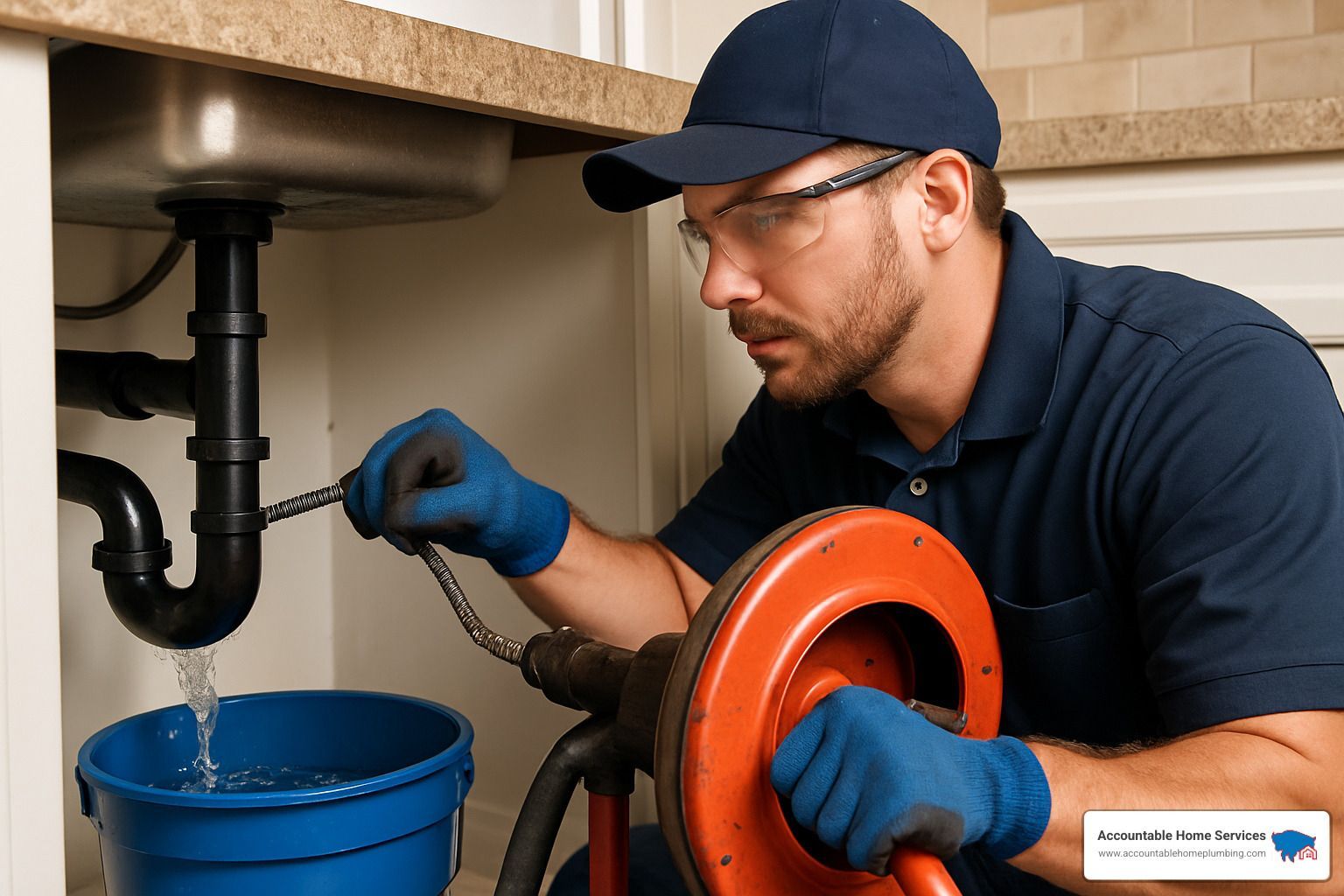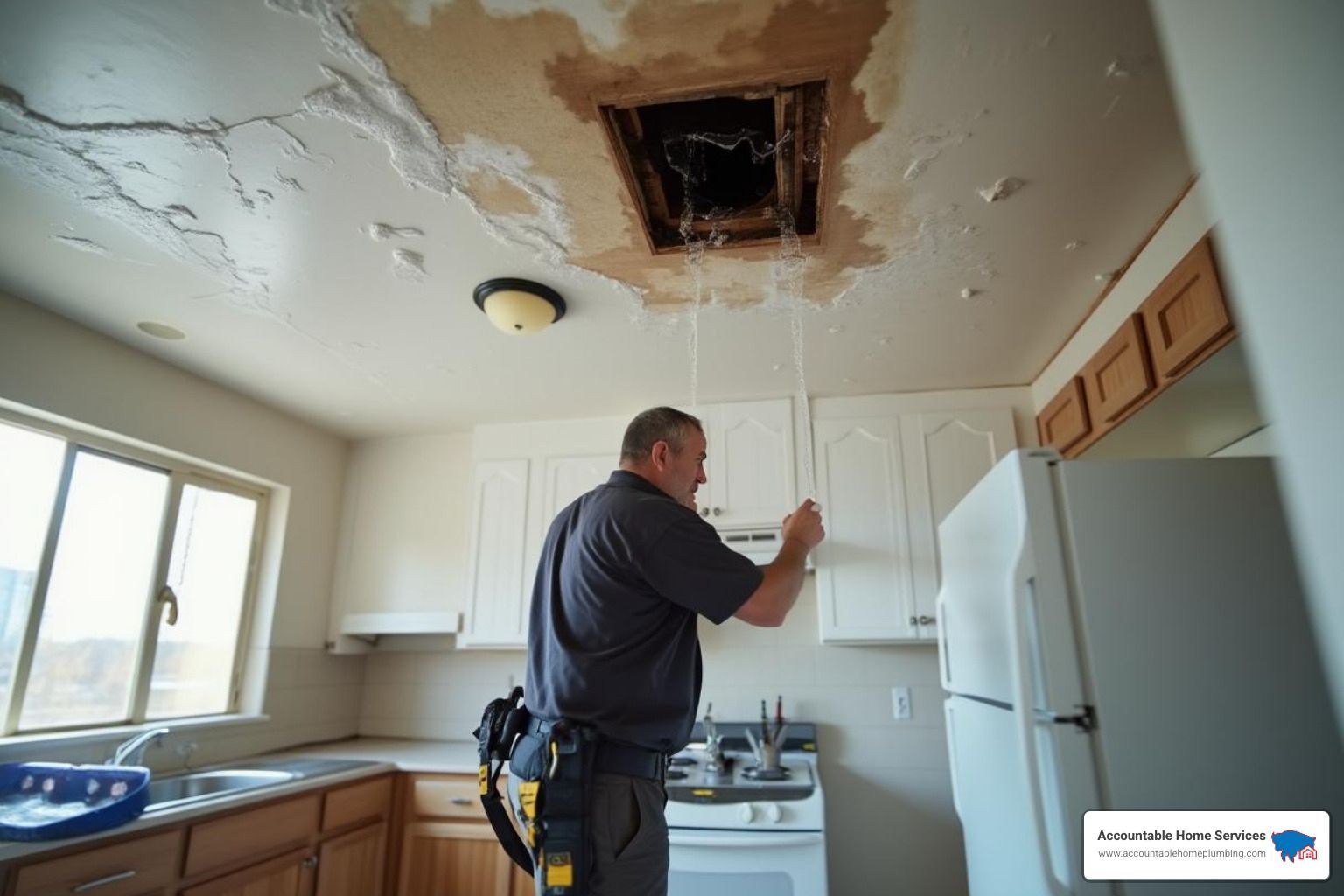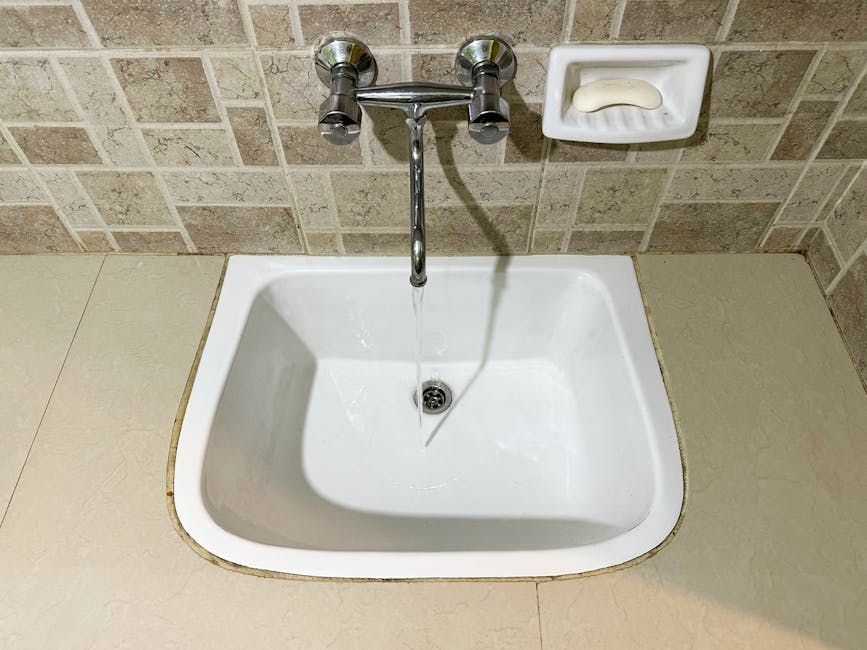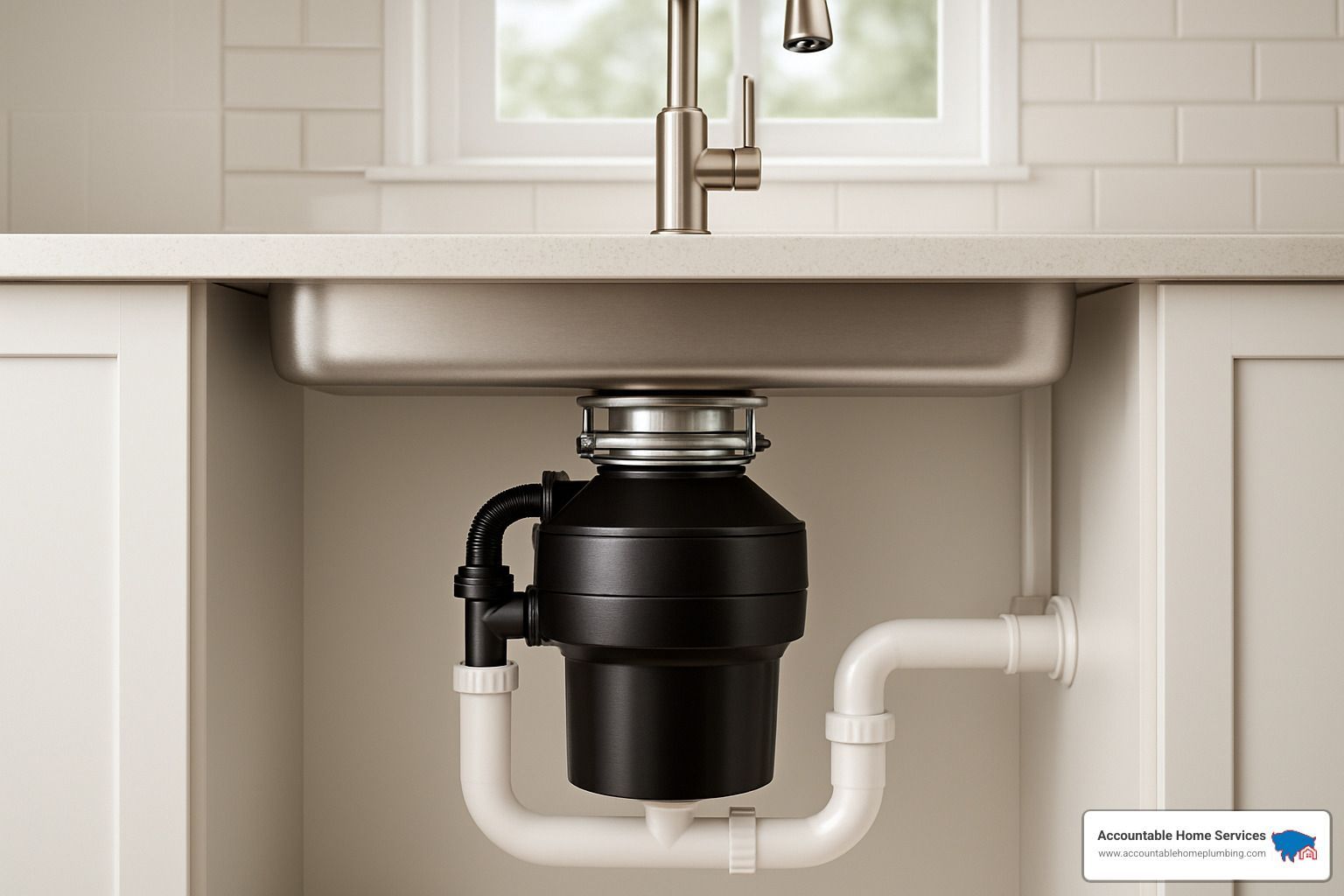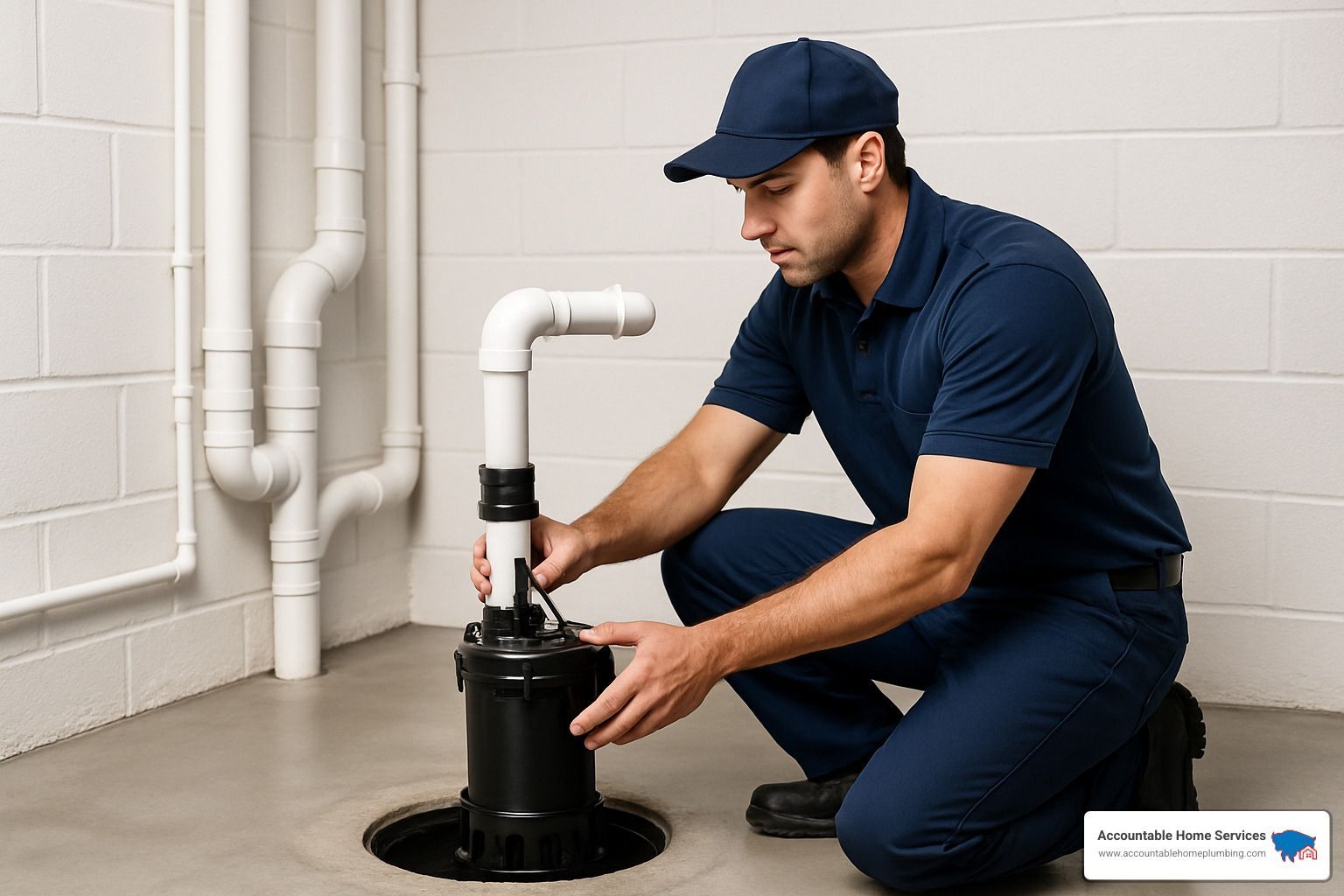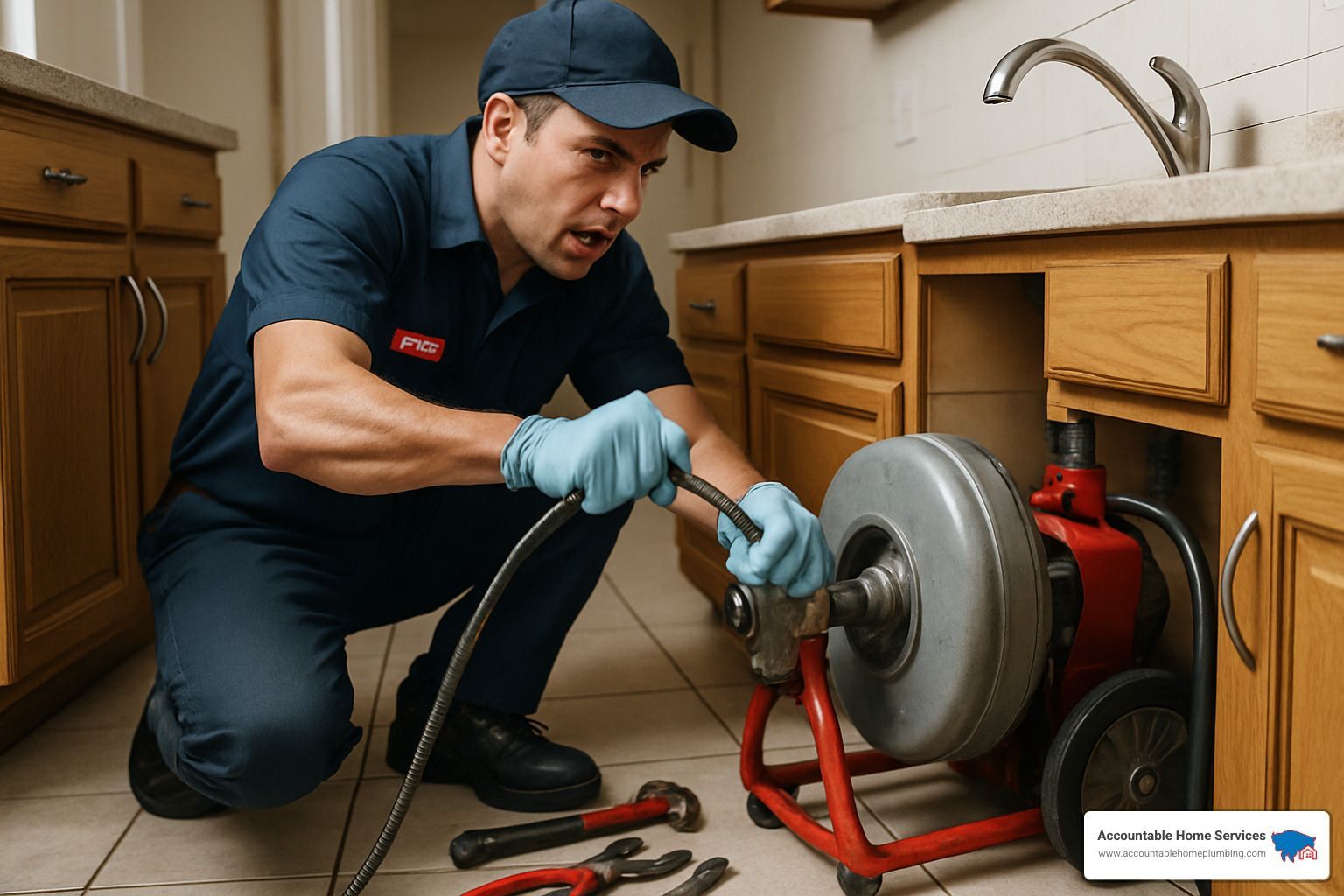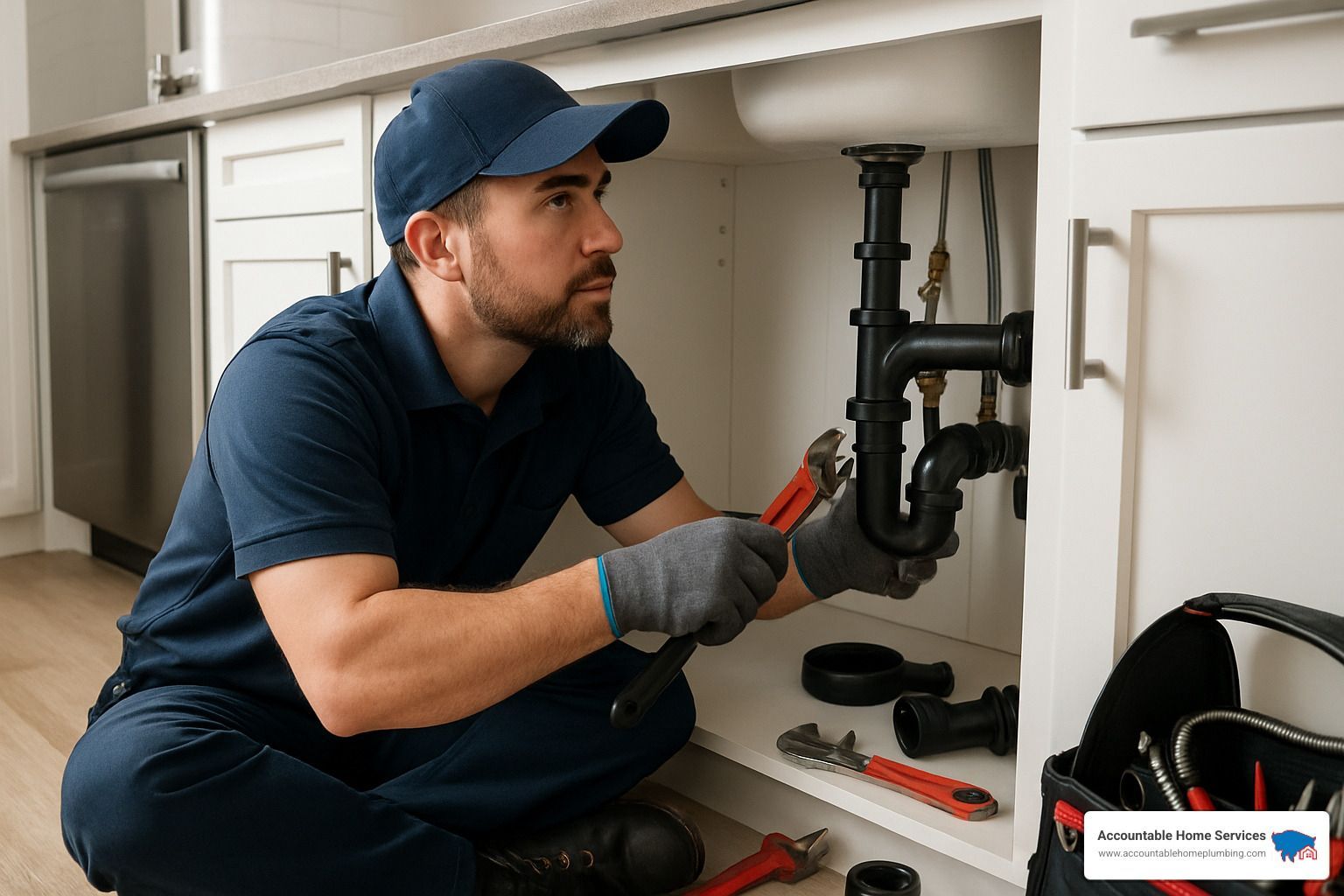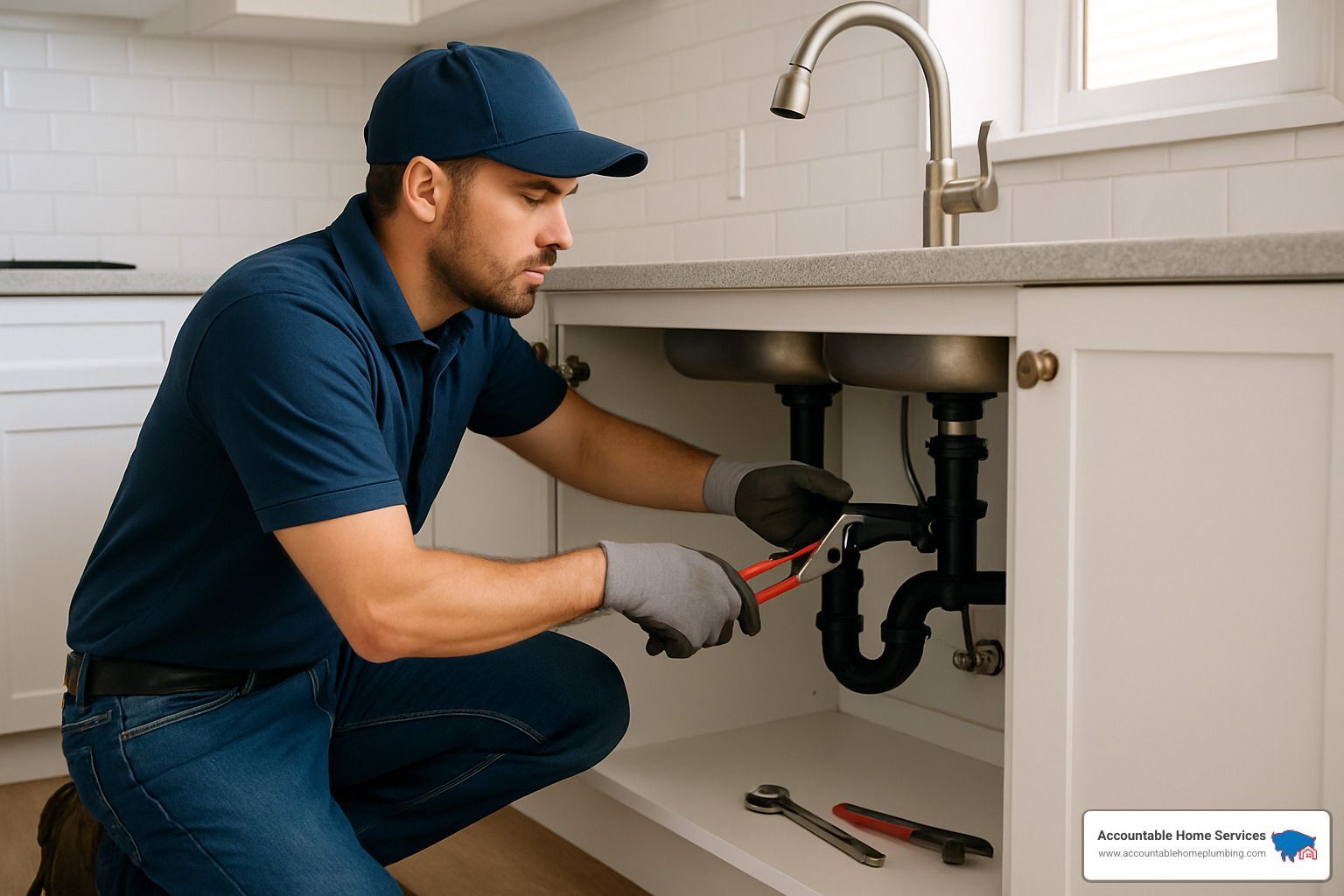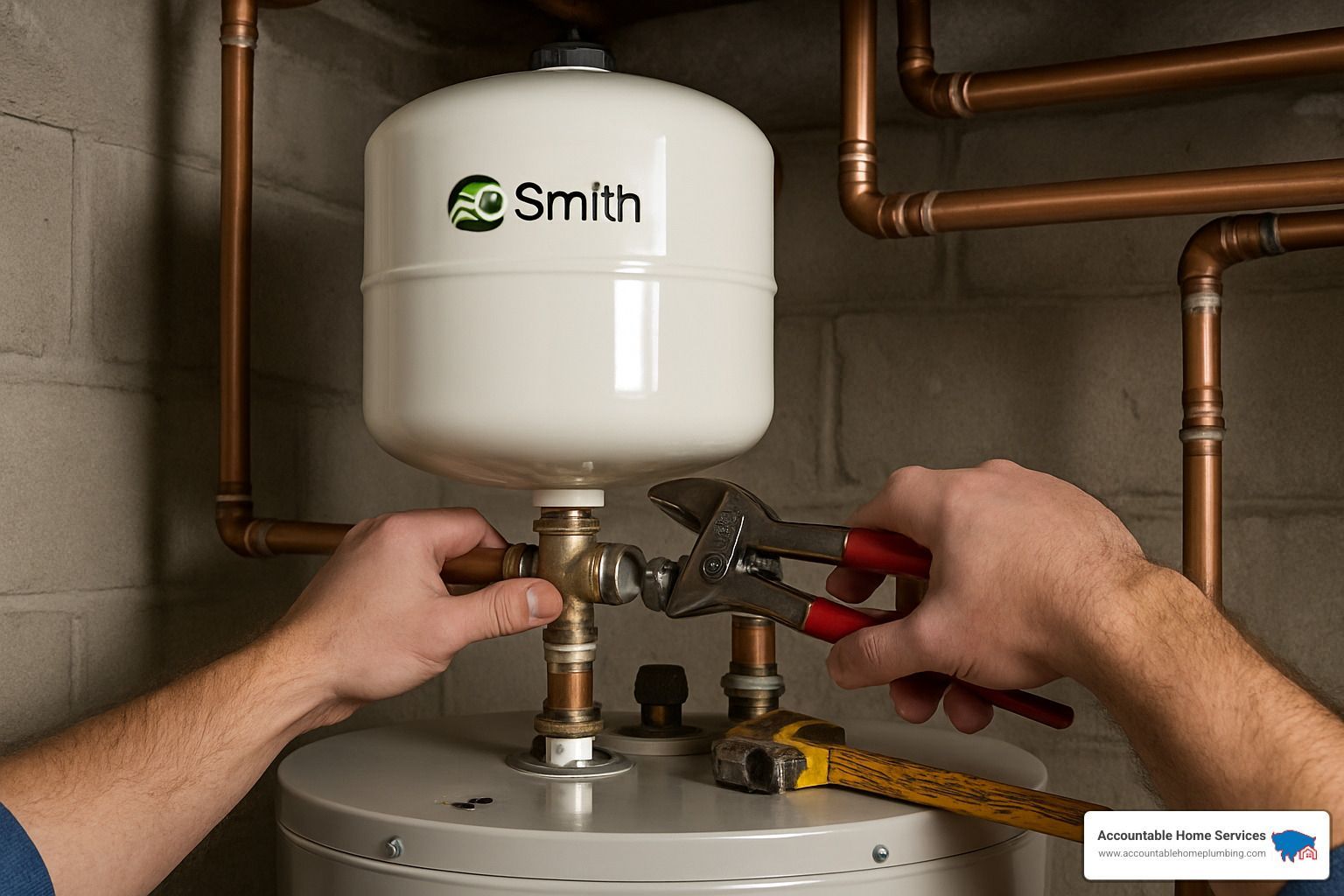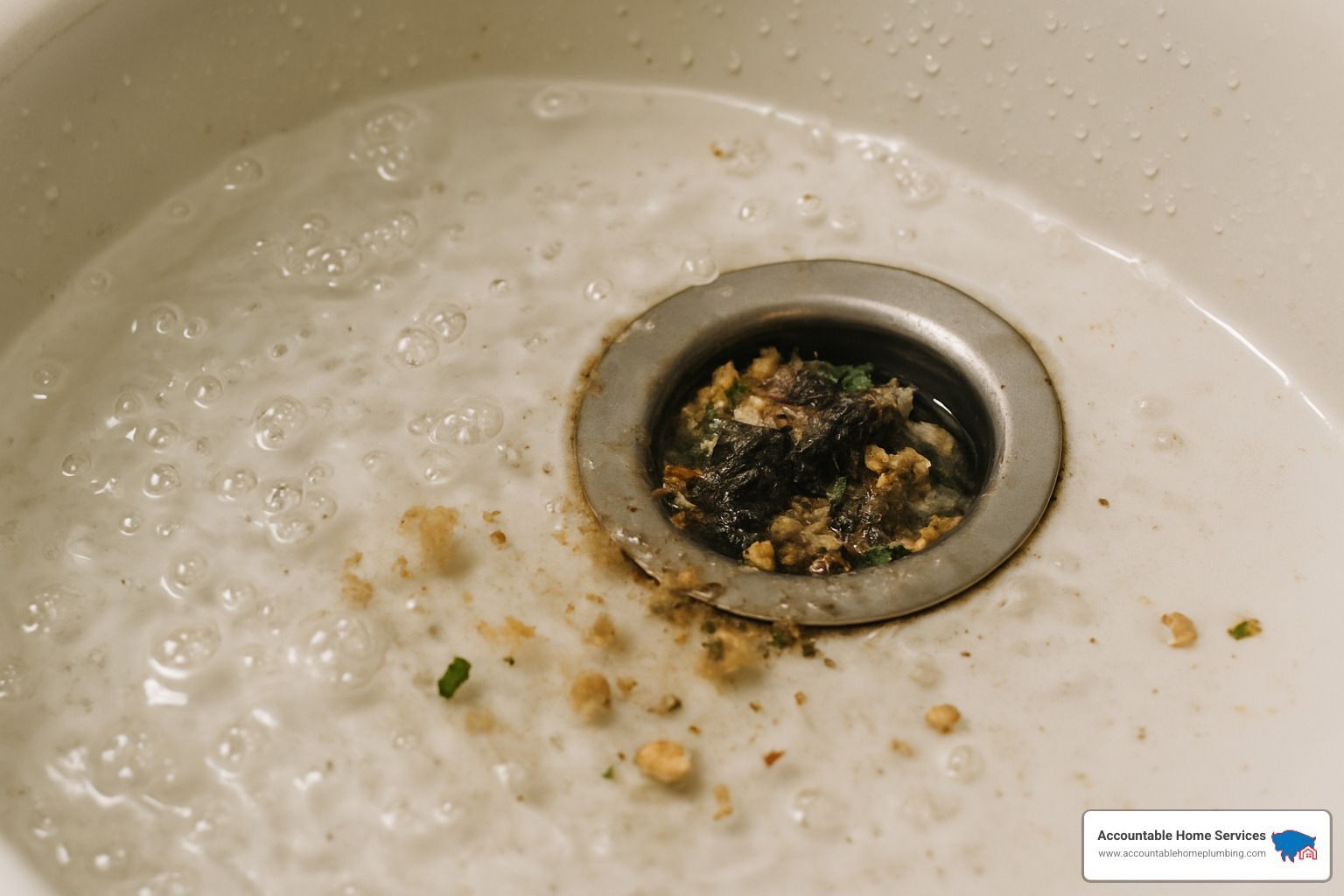Hot Tips for a Long-Lasting Water Heater: Your Maintenance Guide
Why Routine Water Heater Maintenance Matters
Routine water heater maintenance isn't just a good idea—keep your home's hot water running smoothly. Without regular care, water heaters can lose efficiency, leading to unexpected cold showers, higher energy bills, and costly repairs. Most importantly, proper maintenance could prevent the need for a premature replacement.
Here's a quick look at what you should be doing:
- Flush the Tank: Do this every six months to remove sediment buildup.
- Inspect the Anode Rod: Check it regularly for corrosion to extend your heater's lifespan.
- Test the TPR Valve: This safety feature should be tested annually.
By following these simple steps, you ensure your water heater functions efficiently and safely.
So why is maintaining your water heater such a big deal? Think of it as routine care for a reliable car you drive every day. Your water heater works tirelessly, day in and day out, to provide you with hot water for showers, cleaning, and more. Like any busy appliance, it requires regular attention to continue performing optimally.
In the Denver Metro area, where the temperature can vary throughout the year, ensuring that your water heater is well-maintained can make all the difference. If you're the kind of person who values peace of mind and the assurance that your family won’t be left shivering in a cold bath, basic water heater upkeep should be on your to-do list.
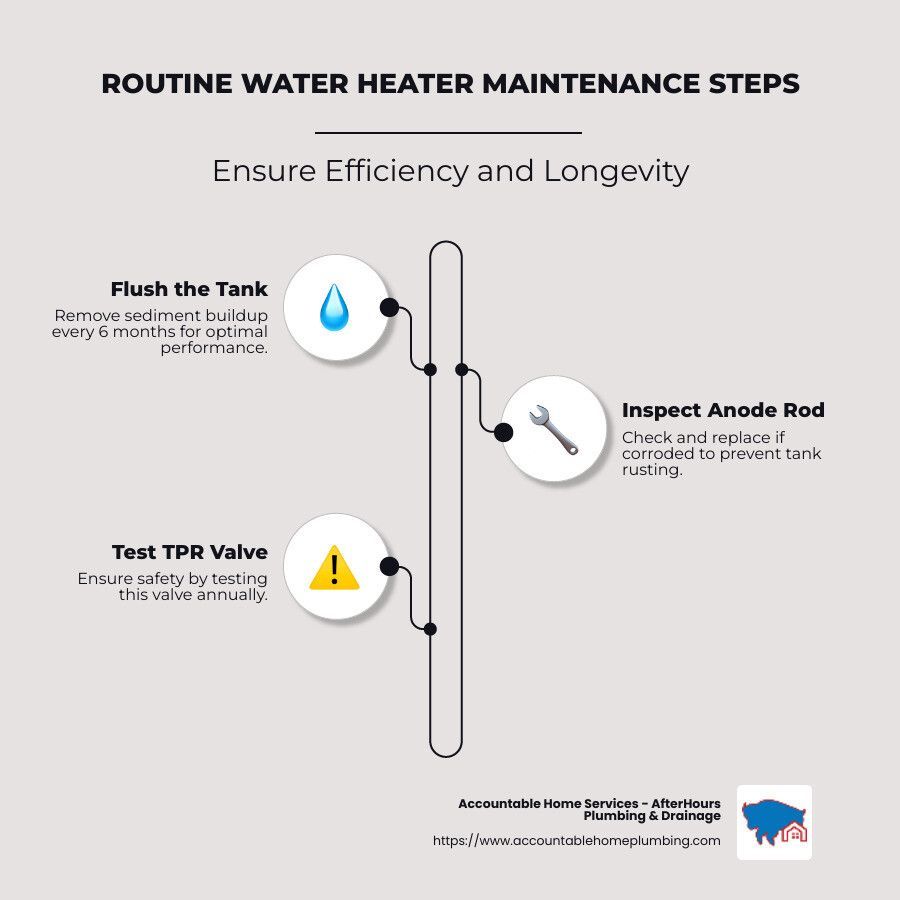
Understanding Your Water Heater
Water heaters are the unsung heroes of our homes. They tirelessly provide hot water for showers, cleaning, and more. But to keep them running smoothly, it's important to understand the different types, key components, and their lifespan.
Types of Water Heaters
- Tank-Style Water Heaters: These are the most common. They store a large volume of heated water, ready for use. They are reliable but can be bulky.
- Tankless Water Heaters: These heat water on demand, which means no storage tank is needed. They're energy-efficient and save space but might have a higher upfront cost.
- Heat Pump Water Heaters: These use electricity to move heat from the air to the water. They are more energy-efficient than traditional electric heaters.
- Solar Water Heaters: Using energy from the sun to heat water, these are eco-friendly but depend on sunlight availability.
Key Components
Regardless of the type, most water heaters share common components:
- Tank: For tank-style heaters, this is where the water is stored and heated.
- Heating Element or Burner: This is what heats the water.
- Thermostat: Controls the temperature of the water.
- Anode Rod: Prevents corrosion inside the tank. Regular checks can extend the heater's life.
- Temperature and Pressure Relief (TPR) Valve: A safety device to prevent excessive pressure buildup.
- Dip Tube: Delivers cold water to the bottom of the tank for heating.
Lifespan
The lifespan of a water heater depends on its type and maintenance. Tank-style heaters typically last 8-12 years, while tankless models can last up to 20 years with proper care. Regular maintenance, like flushing the tank and inspecting the anode rod, can significantly extend these lifespans.
Understanding these basics helps you perform routine maintenance effectively. It also allows you to recognize when professional help might be needed. In places like Denver, where water heaters work hard due to fluctuating temperatures, knowing your appliance well can save you from unexpected breakdowns.
Routine Water Heater Maintenance
Keeping your water heater in top shape is easier than you might think. Routine water heater maintenance involves a few simple tasks that can save you money and extend the life of your appliance. Let's explore the essentials: flushing, checking the anode rod, inspecting the TPR valve, and setting the right temperature.
Flushing the Tank
Over time, sediment can build up in your water heater tank. This reduces efficiency and can cause damage. Flushing the tank removes this sediment. Here's how:
- Turn Off the Power: For electric heaters, switch off the breaker. For gas heaters, set the thermostat to "pilot."
- Connect a Hose: Attach a garden hose to the drain valve at the bottom of the tank.
- Drain the Tank: Open the valve and let the water flow until clear. This usually takes a few minutes.
- Close the Valve: Disconnect the hose and turn the power back on.
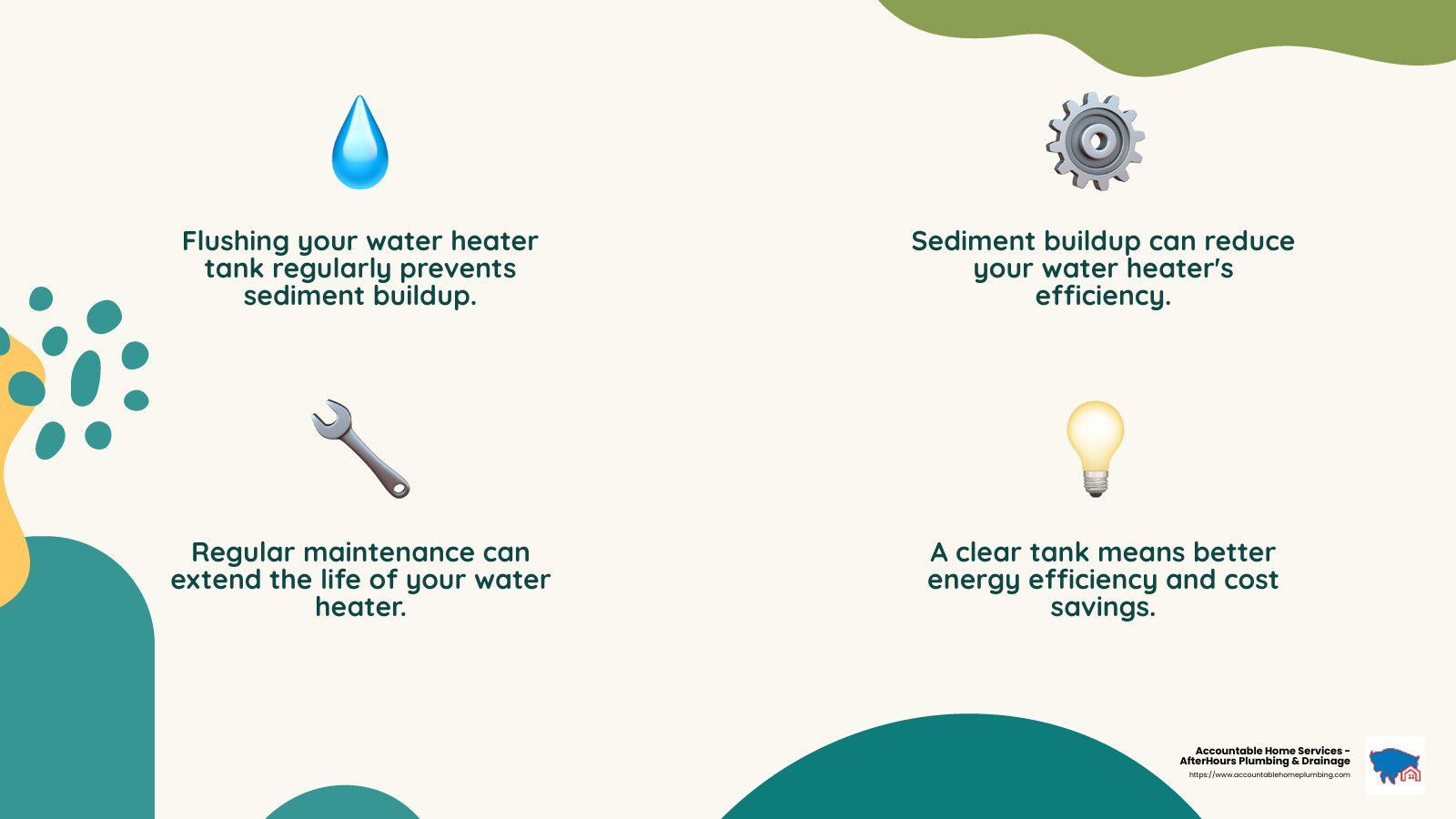
Checking the Anode Rod
The anode rod is a metal rod that attracts corrosive elements, preventing them from rusting your tank. Check it yearly:
- Inspect for Corrosion: If more than 6 inches of the core wire is exposed, it's time to replace it.
- Replace if Needed: Simply unscrew the old rod and install a new one.
Inspecting the TPR Valve
The Temperature and Pressure Relief (TPR) valve is a critical safety feature. It prevents the tank from over-pressurizing. Test it like this:
- Lift the Lever: Water should flow out. If it doesn’t, or if it leaks after testing, replace the valve.
Setting the Temperature
The thermostat controls the water temperature. Keep it at 120 degrees Fahrenheit. This is hot enough for most needs and prevents scalding.
- Adjust the Dial: For electric heaters, you might need to remove a panel to access the thermostat.
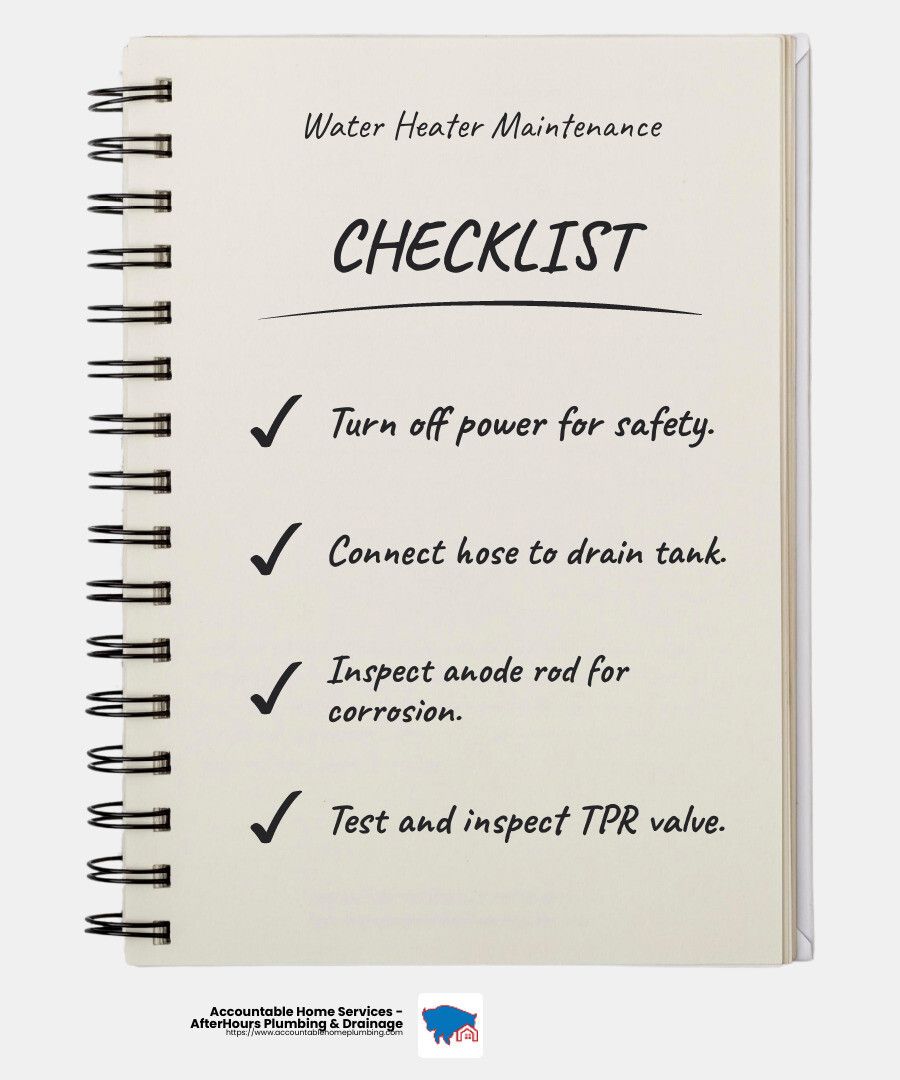
By following these steps, you ensure your water heater runs efficiently and safely. Regular maintenance is the key to a long-lasting water heater. Keep these practices in mind, and you'll enjoy hot water whenever you need it.
Next, we'll discuss the tools and safety precautions necessary for performing these maintenance tasks.
Essential Tools and Safety Precautions
Before diving into routine water heater maintenance, it's crucial to gather the right tools and prioritize safety. This will make your maintenance tasks smoother and safer.
Tools You'll Need
Here's a handy list of tools to keep in your toolkit for water heater upkeep:
- Garden Hose: Essential for draining the tank.
- Bucket: Useful for catching water from the TPR valve.
- Screwdriver: Needed to remove panels and access parts.
- Adjustable Wrench: For loosening and tightening connections.
- Pipe Wrench: Handy for stubborn bolts and fittings.
- Teflon Tape: Seals threads on pipe connections.
- Replacement Anode Rod: Have one on hand if your current rod is corroded.
Safety Gear
Safety should always come first. Equip yourself with the following:
- Safety Gloves: Protect your hands from hot water and sharp edges.
- Goggles: Shield your eyes from splashes and debris.
Safety Precautions
Taking the right precautions can prevent accidents and injuries:
- Power Off: Always turn off the power supply. For electric heaters, switch off the circuit breaker. For gas heaters, set the gas valve to "pilot."
- Shut Off Water Supply: Close the cold water valve to prevent new water from entering the tank.
- Cool Down: Allow the tank to cool for a few hours before starting your work. This helps prevent burns from hot water.
- Ventilation: Ensure the area is well-ventilated, especially for gas heaters, to avoid gas buildup.
By preparing with the right tools and safety gear, and by following these precautions, you can perform maintenance tasks effectively and safely. Next, we'll guide you through a detailed step-by-step maintenance process to keep your water heater running smoothly.
Step-by-Step Maintenance Guide
Performing routine water heater maintenance is essential to keep your system running efficiently and extend its lifespan. Follow these simple steps to ensure your water heater stays in top shape.
1. Test the TPR Valve
The Temperature and Pressure Relief (TPR) valve is a critical safety feature. It prevents excess pressure from building up in the tank.
- Locate the TPR Valve: Usually found on the top or side of the tank.
- Test the Valve: Place a bucket under the discharge pipe. Lift the valve's lever for a few seconds, then release it. You should hear a rush of water or see water flow into the bucket. If the valve doesn't release water, it might be faulty and require replacement.
2. Inspect the Anode Rod
The anode rod prevents tank corrosion by attracting corrosive elements.
- Turn Off Water and Power: Ensure safety by shutting off the water supply and power.
- Access the Anode Rod: Use a wrench to remove the rod from the top of the tank.
- Check for Corrosion: If the rod is heavily corroded (less than half an inch thick or coated in calcium), replace it.
3. Flush the Tank
Flushing removes sediment buildup that can lower efficiency and cause damage.
- Connect a Hose: Attach a garden hose to the drain valve at the bottom of the tank.
- Drain the Tank: Open the valve and let the water flow out until it's clear. This may take a few minutes.
- Close the Valve: Once clear, close the valve and disconnect the hose.
4. Adjust the Temperature
Setting the right temperature can prevent scalding and save energy.
- Locate the Thermostat: For electric heaters, it might be behind a panel. Gas heaters usually have a visible dial.
- Set the Temperature: Adjust to 120 degrees Fahrenheit. This is a safe and energy-efficient setting.
By following these steps, you can maintain your water heater's performance and safety. Regular checks and maintenance will help you catch small issues before they become big problems. Stay tuned for our next section on insulation techniques to further improve your water heater's efficiency.
Water Heater Insulation Techniques
Boosting your water heater's efficiency doesn't just stop at routine maintenance. Insulating both the tank and the pipes can make a significant difference. Let's explore how you can keep your water heater cozy and efficient.
Pipe Insulation
Insulating your hot water pipes is like giving them a warm coat. It helps reduce heat loss as hot water travels to your faucets. Here's how you can do it:
- Measure Your Pipes: Start by measuring the diameter of your pipes. This will help you buy the right size of insulation.
- Choose the Right Insulation: Self-adhesive foam pipe insulation is a popular choice. It's easy to install and effective in retaining heat.
- Install the Insulation: Cut the insulation to fit around any obstacles, like couplings. Peel off the adhesive backing and wrap it snugly around the pipes.
- Special Considerations: For pipes near the flue of a gas water heater, opt for heat-resistant fiberglass pipe wrap instead of foam.
Tank Insulation
Your water heater tank can also benefit from an extra layer of insulation. This step can reduce standby heat loss by 25% to 45%!
- Get an Insulation Blanket: Purchase a water heater insulation blanket from your local hardware store.
- Wrap the Tank: Carefully wrap the blanket around your water heater, ensuring not to cover any important components like the thermostat or the burner access.
- Tape It Up: Secure the blanket with tape, making sure it's snug but not too tight.
By insulating your pipes and tank, you not only improve efficiency but also save on energy costs. This simple step can make your water heater work smarter, not harder.
Stay tuned for our next section, where we'll tackle troubleshooting common issues you might face with your water heater.
Troubleshooting Common Issues
Even with routine water heater maintenance, you might encounter some common issues. Let's break down what these issues are and how to address them.
Inconsistent Temperature
Finding that your shower goes from hot to cold unexpectedly? This could be a sign of a failing thermostat or heating element. Here's what you can do:
- Check the Thermostat: Make sure it's set to the right temperature—around 120°F is ideal. If it's set correctly but still acting up, you might need a replacement.
- Inspect the Heating Element: For electric heaters, a faulty heating element could be the culprit. This might require professional help to replace.
Strange Noises
Rumbling, popping, or banging sounds coming from your water heater? These noises are often due to sediment buildup at the bottom of the tank.
- Flush the Tank: Regularly flushing your tank can help remove sediment. Attach a garden hose to the drain valve and let the water run out until it's clear.
- Consider a Water Softener: If you have hard water, installing a water softener can reduce sediment buildup over time.
Leaks
Water pooling around your heater is never a good sign. Leaks can lead to significant damage if not addressed promptly.
- Check for Loose Connections: Inspect the plumbing connections and tighten any loose fittings with a wrench.
- Examine the TPR Valve: If the leak is coming from the Temperature and Pressure Relief (TPR) valve, it might be faulty or need replacement.
- Inspect the Tank: A leaking tank often means it's time for a replacement, especially if it's over 10 years old.
By addressing these common issues promptly, you can prevent more severe damage and ensure your water heater runs efficiently. Up next, we'll dive into some frequently asked questions about routine water heater maintenance.
Frequently Asked Questions about Routine Water Heater Maintenance
What is routine maintenance on a water heater?
Routine maintenance on a water heater involves several key tasks to ensure it operates smoothly and efficiently. These tasks include:
- Flushing the Tank: This is crucial for removing sediment that builds up over time. Sediment can cause issues like strange noises and reduced efficiency. Flushing should be done at least once a year to keep your water heater in top shape.
- Checking the Anode Rod: The anode rod helps prevent corrosion inside the tank. Inspect it annually and replace it if it's more than 50% corroded.
- Testing the TPR Valve: The Temperature and Pressure Relief (TPR) valve is a safety device that should be tested annually to ensure it functions properly. Simply lift the valve's lever and let it snap back. You should hear a rush of water; if not, it may need replacing.
- Inspecting for Leaks: Regularly check for any signs of water pooling around your heater. Leaks can lead to water damage and higher utility bills if not addressed promptly.
How often should you flush your water heater?
Flushing your water heater is an essential part of maintenance. Ideally, this should be done annually. For homes with hard water, more frequent flushing might be necessary. Sediment buildup can lead to inefficiencies and shorten the lifespan of your unit. By flushing the tank, you remove this buildup, helping your water heater run more efficiently and last longer.
What are signs your water heater needs maintenance?
Recognizing the signs that your water heater needs maintenance can save you from costly repairs or replacements. Here are some red flags to watch for:
- Rusty Water: If your hot water appears rusty, it could indicate corrosion inside the tank or pipes.
- Strange Noises: Rumbling or popping noises are often caused by sediment buildup. This can lead to inefficiencies and should be addressed by flushing the tank.
- Leaks: Water leaks, even small ones, should be inspected immediately. They can lead to significant damage and might be a sign of a failing TPR valve or tank.
By keeping an eye out for these signs and performing regular maintenance, you can ensure your water heater remains reliable and efficient. Now, let's explore how to insulate your water heater for even better efficiency.
Conclusion
Routine water heater maintenance is not just a good practice; it's a necessity for ensuring your water heater operates efficiently and lasts as long as possible. By regularly flushing the tank, checking the anode rod, and testing the TPR valve, you're taking proactive steps to prevent common issues like leaks and inefficiencies. This not only saves you money on energy bills but also extends the lifespan of your appliance.
At Accountable Home Services - AfterHours Plumbing & Drainage, we understand that maintaining your water heater might seem overwhelming. That's why we offer professional assistance to homeowners across the Denver Metro area. Our team is available 24/7 to handle any water heater concerns, from routine maintenance to emergency repairs.
Why choose professional help?
- Expertise and Experience: Our technicians are skilled in diagnosing and fixing water heater issues quickly and efficiently.
- Upfront Pricing: We provide transparent pricing with no hidden fees, so you know exactly what to expect.
- Peace of Mind: With professional maintenance, you can rest assured that your water heater is in good hands, reducing the risk of unexpected breakdowns.
Whether you're dealing with inconsistent temperatures, strange noises, or just want to ensure your water heater is in peak condition, we're here to help. For reliable service and expert advice, contact us today, and let us handle your plumbing needs with care and professionalism.

